Cu Chi Tunnels Vietnam Guide: Facts, Length, History with Map
Cu Chi Tunnels (pronounce: Ku Chi) is an underground defense system located in Cu Chi District, 70 km northwest from District 1, Center of Ho Chi Minh City. This system was dug by the Viet Minh resistance army and the National Liberation Front of South Vietnam during the Indochina War and the Vietnam War. The tunnel system consists of infirmary, many rooms, kitchen, storage, office, underground tunnel system, about 250 km long and ventilation systems located in the bushes.
- Location: Cu Chi District, Ho Chi Minh City, Vietnam
- Opening Hours: From 7:30 AM - 5:00 PM Everyday
- Dress Code: Comfortable Clothes, Shoes and Torch
- Entrance Fee: Ticket Price - 100.000 VND/Adult/Turn
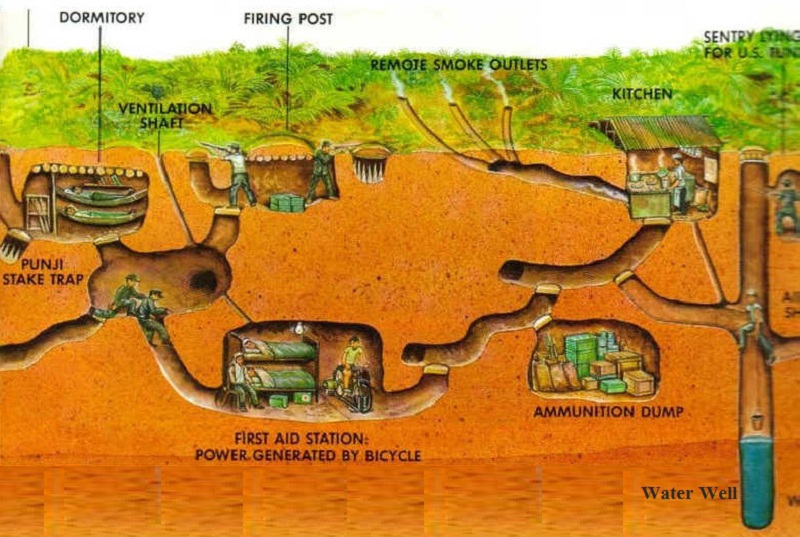
Map of Cu Chi Tunnels System
Cu Chi Tunnels were built at the end of the Ho Chi Minh Trail, on a land known as "steel land" to praise the strong will of the local people and army here. During the 1968 Tet Offensive, the Southern Liberation Army came from this tunnel system to attack Saigon. The Cu Chi Tunnels today include Bến Đình Area and Bến Dược Area for tourists to visit.
- History of Cu Chi Tunnels System:
Cu Chi Tunnels is a common term for the different tunnels, formed between 1946-1948, during the Indochina War (French War). During this time, the military and local people of Tan Phu Trung and Phuoc Vinh An dug short tunnels, a simple structure used to hide people, documents and weapons. It was also suggested that the excavation started by the people of this area spontaneously in 1948.
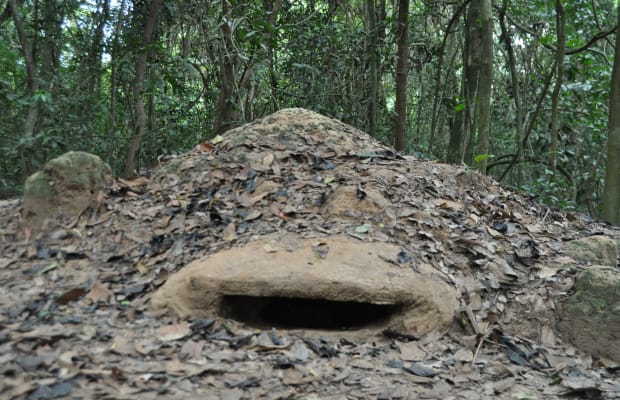
Ventilation Air Holes in Cu Chi Tunnels
Residents dug individual tunnels to avoid the raids of the French army and to provide shelter for the Viet Minh. Each village built a separate tunnel, then due to the need to travel between the tunnels of the villages, the tunnel system was interconnected to form a continuous, complex tunnel system, which later expanded. In many places, especially 6 communes in the North of Cu Chi and the structure of tunnels has been improved to become a place to hide forces, when fighting, they can contact and support each other.
During 1961–1965, the northern communes of Cu Chi completed the axis of the tunnel called "the backbone", after which unions, agencies and units developed the branch to connect with the axis tunnels between hamlets, communes and regions. Above the surface, the Cu Chi army and people also dug a trench that was interconnected with the tunnel, at which time the battle tunnel was also dug into many layers, many alleys. In addition, on the tunnel there are many battle mounds, minefields, nail holes, bunkers ... arranged in continuous clusters to create a solid battlefield in the guerrilla warfare, called battle commune.
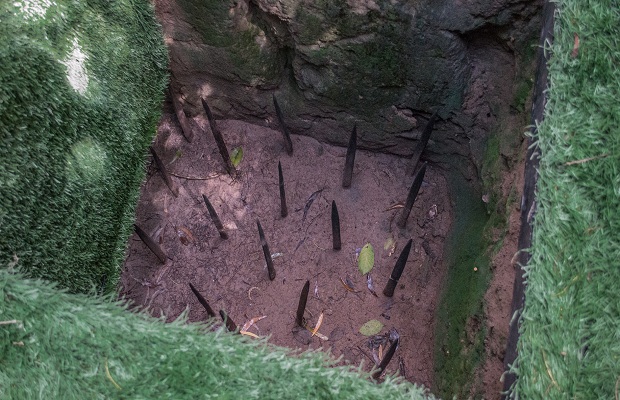
Booby Trap in Cu Chi Tunnels
By 1965, about 200 km of the tunnel were dug. In terms of scale, the tunnel system has a total length of over 200 km, with 3 different depth layers, the upper layer is about 3 m deep under ground, the middle layer is about 6 m deep under the ground, the bottom layer is deeper than 12 m. At this time, the tunnel is not only a shelter but has become a place to live, ambulance, meeting, ...
- Structure of Cu chi Tunnels System:
Cu Chi Tunnels were dug on a laterite clay area, so it is durable and less prone to landslides. The tunnel system is located deep underground, can withstand the destructive power of the largest blockbusters of the US military. Air is drawn into the tunnel through the vents. Different areas of the tunnel can be isolated as needed.
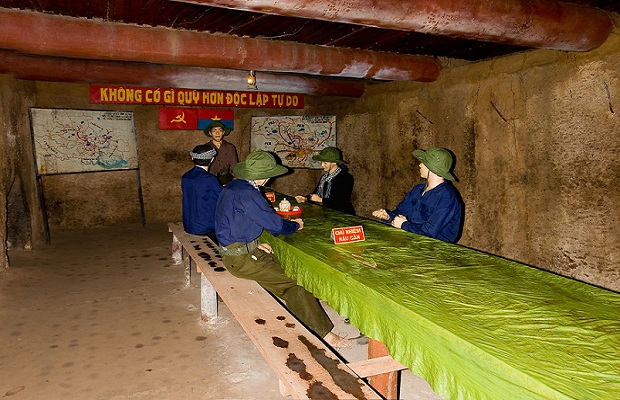
Commander Room in Cu Chi Tunnels System
The tunnel is 3 to 12 meters deep under ground, the height is only enough for one person to stoop. The first basement at the edge of the forest has an underground well that provides drinking water and living for the entire tunnel.
The tunnel system consists of 3 floors, from the "backbone" radiating countless long, short branches connecting each other, with branches extending to the Saigon River. Level one 3m under ground, resistant to bullets and the weight of tanks, armored vehicles.
The 2nd floor is 5m deep from the ground, able to resist small bombs. And the last floor is 8-12m ender ground. The way up and down between basements is arranged by secret hatches. Above the camouflage discreetly, looking like the termite extruded mounds, along the tunnel with vents. The tunnel with large tunnels to rest, a place to store weapons, food, water wells, a Hoang Cam stove, a commander, anatomy ... There are also large vaults and roofs. Airy roofing, cleverly disguised to watch movies and arts.
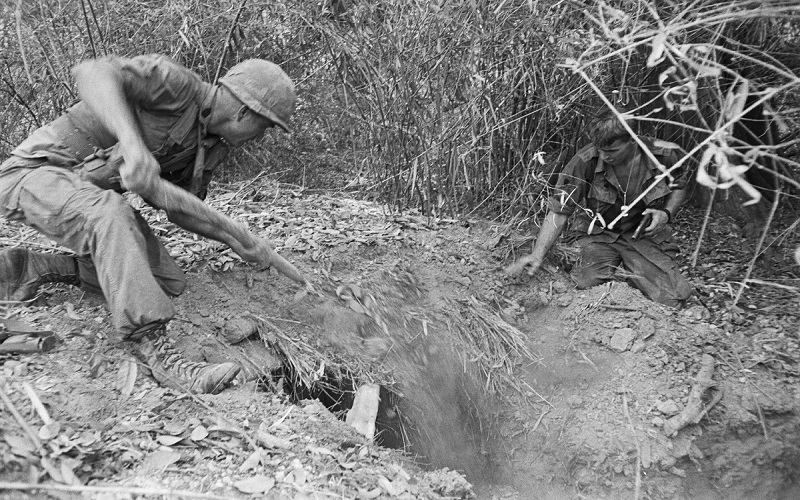
Although the US army and South Vietnamese Army had put a lot of effort with many operations to destroy the tunnels sysem (including sending "tunnels rats" into the tunnels), but they failed to bring down the system completely. The reason is that these tunnels were built isolated and had different escapes out to the Saigon River, counterfeit bunkers and booby traps.
In the tunnel system, there are some special closed-door buttons set up in different places to prevent the enemy and toxic gas. The soldiers also carved unrevealed ventilation vents onto the ground and camouflaged them extremely discreetly. Also, there are many skillful deadly and dangerous traps that were arranged to keep safe for those insides.
- Cu Chi Tunnels Shooting Range:
With shooting real bullet, Cu Chi firing range price is 20,000 VND per bullet with K54; 23,000-25,000 VND per one with Colt 45, K59, Rulo; with AK(1), Carbin, AK and M16(1) the price is 30,000-35,000 VND per one. The highest price per one is 40,000 VND when you choose M16. K54, Colt 45, K59, Rulo, Ak (1), Carbin, AK, M16 and M16 (1) are kinds of gun used in the military. There are supervisors loading guns for you and make sure you get some headgear to protect your ears since it is super loud. Remember safety is first.
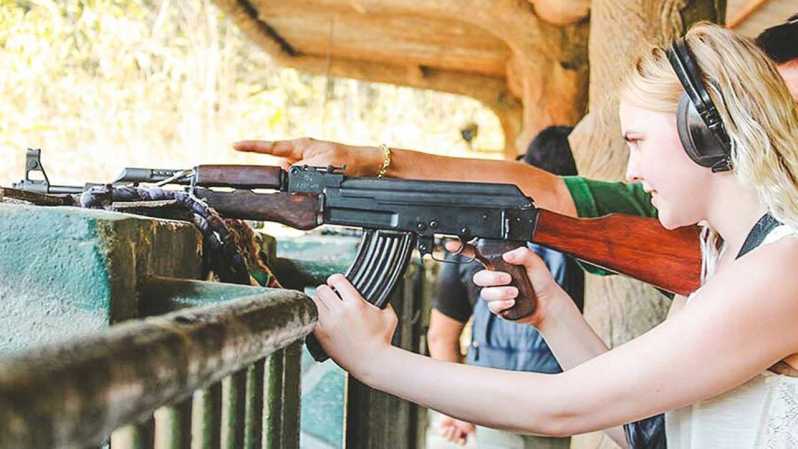
Cu Chi Tunnels Shooting Range
The other is paintball shooting which is cheaper than real one. Cu Chi shooting range price with paint bullet is 3,000 VND/one. There are three kinds of gun in your choice including: AK, M16 and handgun. Each kind of these is different from quantity of bullet. There are 25 bullets with AK, 20 with M16 and 7 with handgun. Meanwhile, the paint shooting match may host a group from 6 people to up. Your group may be fight with others or separated members from your group. In addition, players also pay for services fee including uniform, mask, battlefield and refugees.
Recommended Tours:
- Cu Chi Tunnels Daily Small Group Tour from Ho Chi Minh City
- Cu Chi Tunnels Private Tour - Half Day from Ho Chi Minh City
See Related Articles:

![]()
![]()
![]()
![]()
![]()
Best of Vietnam

Best Vietnamese Food You Have to Try in Vietnam
Best Food in Vietnam: Vietnamese Traditional Food is top World well known to be both healthy and...
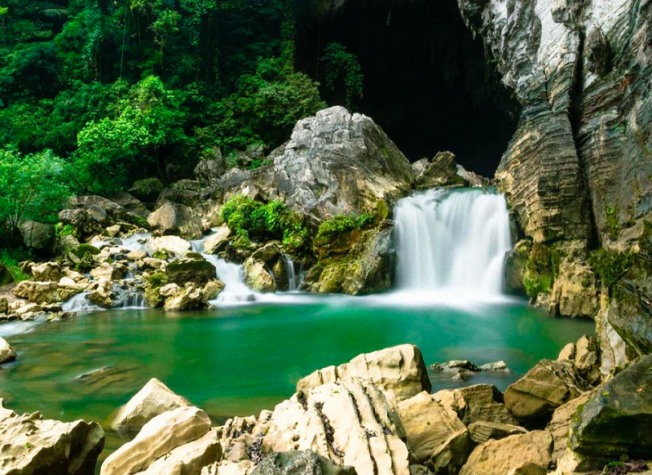
10 Best National Parks in Vietnam
Vietnam Travel Guide: If you look for the Best Wildlife Discovery Experience in Vietnam, here are...
Read More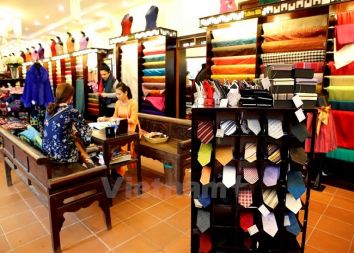
Best Souvenir to Buy in Vietnam
If you look for Best Things to Buy when traveling to Vietnam to bring home for your family & friends...
Read More
The 10 Best Places to Visit in Vietnam
Vietnam Travel Guide: Home to an extensive collection of historical and cultural attractions,...
Read More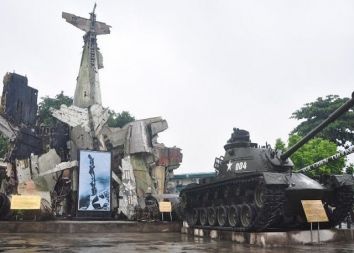
Top 10 Museums You Should Not Miss in Vietnam
Vietnam, 4.000 years old country has a unique and lengthy history, culture with 54 ethnic groups. It...
Read MoreFind your trip
Vietnam Best Tours
Vietnam Car Rental
Vietnam Travel Blog
- Vietnamese People: Origin, History, Culture and Traditions
- Vietnam Currency: Best ATM and Places to Exchange Money
- Vietnam Map: Regions, Cities & Provinces Map of Vietnam
- What is illegal Things in Vietnam: Rules & Laws for Tourists
- Best Time to Travel to Vietnam to Avoid the Bad Weather
- Vietnam News: Population & Religions of 54 Ethnic Groups









